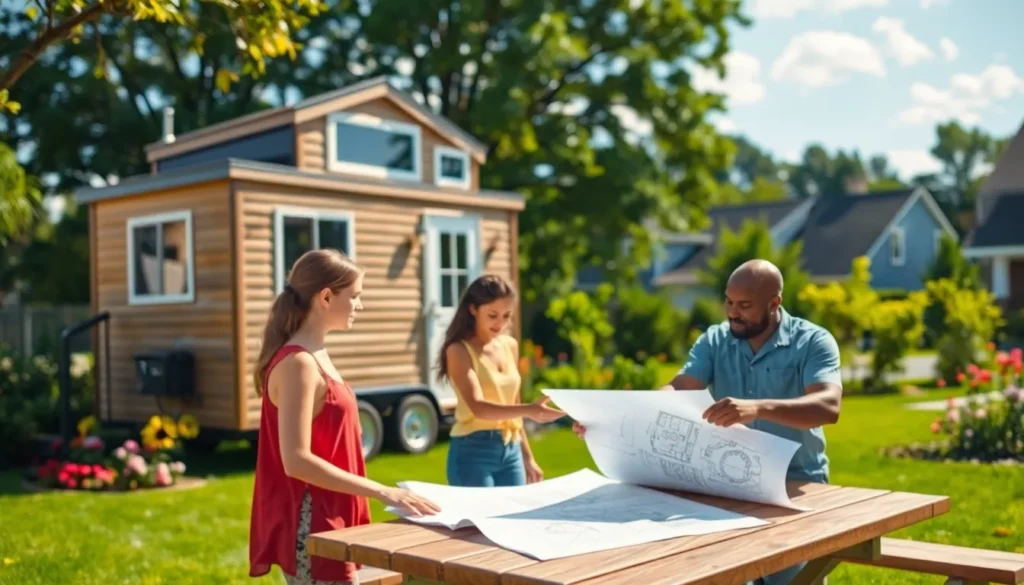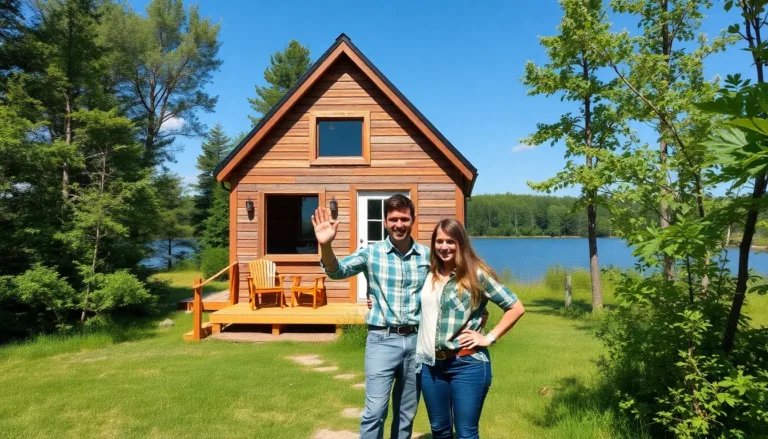Table of Contents
ToggleTiny houses are all the rage, but navigating the legal landscape can feel like trying to find a needle in a haystack. With zoning laws and building codes that seem to change faster than the weather, it’s no wonder many tiny house enthusiasts feel a bit overwhelmed. Who knew that living small could come with such big headaches?
Understanding Tiny House Legalities
Tiny house legalities often create confusion for potential homeowners. Zoning laws vary significantly between municipalities, impacting the placement of tiny houses. Each city or county sets its own regulations, which can include minimum sizes for dwellings and specific land use designations.
Building codes also play a crucial role. These codes dictate the materials and construction methods deemed safe and acceptable. Compliance with these codes may vary, even within the same state, depending on local interpretations and enforcement.
Permitting poses another challenge. Obtaining permits can be a complex process, requiring detailed plans and inspections. Some regions may issue “temporary” permits for tiny homes, complicating long-term living arrangements.
Homeowners typically face additional requirements when situated on wheels. While some jurisdictions classify tiny houses on wheels as recreational vehicles, others treat them as permanent structures. This classification impacts where individuals can park or legally reside.
Despite the complexities, many advocates strive to change outdated regulations. Grassroots movements can lead to new zoning options specifically designed for tiny homes. Collective efforts may yield more favorable conditions for tiny house communities, promoting sustainable living choices.
Before committing to a tiny house, individuals should research the local legal landscape. Understanding applicable laws and regulations will help prevent future hurdles. Consulting with local officials or tiny house organizations can provide valuable insights and resources.
Zoning Regulations

Zoning regulations play a crucial role in the placement and legality of tiny houses. These rules differ significantly across municipalities, affecting tiny house enthusiasts.
Residential vs. Recreational Zoning
Residential zoning typically allows for permanent tiny homes, while recreational zoning applies to structures like RVs. Permanent residences meet specific requirements, which often include size restrictions and utility access. Tiny houses on wheels may fall under different classifications; municipalities may classify them as RVs, requiring compliance with recreational vehicle regulations instead of residential codes. Locating a tiny house in an area zoned for residential use usually offers more legal protections. However, in recreational zones, restrictions may limit year-round residency or require seasonal usage.
Permitting Requirements
Permitting requirements for tiny houses vary widely by location. Some municipalities impose strict guidelines, necessitating detailed plans and inspections. Applicants often need to demonstrate compliance with local building codes, which govern construction materials and methods. Certain areas may also limit tiny homes to temporary permits, creating challenges for residents who seek long-term housing solutions. Engaging with local officials early in the process can clarify requirements and streamline applications. Many tiny house advocates recommend working with organizations knowledgeable about the permitting process for assistance.
Building Codes
Building codes dictate the acceptable standards for tiny house construction. Compliance varies by location, making it crucial for tiny house owners to understand local regulations.
Structural Integrity Standards
Structural integrity standards ensure tiny houses can withstand environmental stresses. Different jurisdictions may mandate specific materials and construction techniques. Some areas emphasize the strength of the foundation, while others focus on overall durability. Tiny house owners often face challenges concerning structural calculations and load-bearing capacities. Identifying the correct standards early in the planning process can streamline construction and eliminate future compliance issues.
Safety Regulations
Safety regulations cover aspects like fire safety, electrical systems, and plumbing requirements within tiny houses. Local building departments often enforce these regulations to protect residents. Some jurisdictions require unique safety features, like fire extinguishers and smoke detectors, especially in smaller living spaces. Tiny house advocates typically recommend comprehensive safety assessments during design phases. Understanding these regulations helps ensure that tiny homes not only comply but also provide safe living environments.
Land Use Considerations
Tiny houses face unique land use considerations that can significantly impact where occupants can reside. Understanding local regulations remains essential for tiny house owners and aspiring homeowners.
Tiny House Communities
Tiny house communities offer an appealing solution for many. These planned neighborhoods may foster a sense of community, enabling like-minded individuals to share resources and experiences. Many communities provide designated areas zoned specifically for tiny houses, ensuring compliance with local laws. Residents in these communities often enjoy shared amenities, which enhance the overall living experience. Local governments may favor such developments since they can lead to increased sustainable living practices. However, prospective residents should still verify zoning regulations before moving in.
Placement on Private Property
Placing tiny houses on private property presents its own set of challenges. Property owners must check local zoning laws to confirm that tiny houses are allowed. Specific criteria, such as minimum lot size and setback requirements, may apply. Homeowners should also consider access to essential utilities, including water, electricity, and sewage disposal. Applying for the necessary permits often proves vital, as non-compliance may lead to fines or removals. Engaging with local authorities early can clarify expectations and streamline the permit process. Overall, careful planning ensures a hassle-free setup on private land.
Navigating the legal landscape of tiny houses can be daunting but understanding local regulations is essential for a successful transition to this lifestyle. By engaging with local officials and conducting thorough research, individuals can mitigate potential legal issues and find suitable locations for their tiny homes. Tiny house communities present an innovative solution to zoning challenges while fostering a supportive environment for residents. As advocates continue to push for more accommodating regulations, the future of tiny living looks promising. With the right knowledge and resources, tiny house enthusiasts can turn their dreams into reality while staying compliant with the law.







